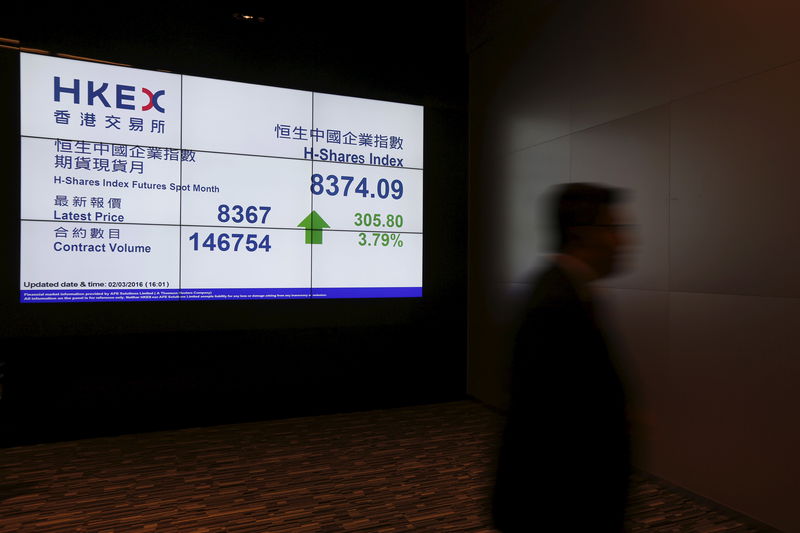Street Calls of the Week
Investing.com -- Investors remain bullish on China stocks but are hesitant to pursue further gains at current levels, according to Bank of America analysts.
“We met with investors in Shanghai last week. People generally agree with our structural bullish view, but are reluctant to chase at this level,” analysts led by Winnie Wu said in a note.
The Hang Seng China Enterprises Index (HSCEI), which has outperformed with a 22% year-to-date increase compared to the Shanghai Composite Index’s 3% rise, was a focal point of discussion.
Onshore mutual funds have notably boosted their allocations in H-shares, which has led to mixed sentiments.
According to BofA, investors appreciate the newfound pricing power of Chinese capital over H-shares but also fear that “H-share will perform like A-share, with more short-term volatilities/rotations”.
Key topics of interest among investors include the return of global long-only (LO) investors to the China market, continued purchasing by Chinese insurers, and concerns over recent negative news such as tariffs, pay cuts, and geopolitical tensions.
Some LO investors are growing apprehensive about the absence of fundamental improvements in employment, deflation, and credit demand.
While trading-oriented investors are preparing to take profits, long-term bulls anticipate only mild pullbacks, advising to "stay invested and don’t jump off the wagon too early."
Meanwhile, some investors are wary of bubble formations in certain tech sectors, BofA notes, such as robotics, where stock prices have surged significantly before production has even commenced. Others are seeking opportunities in underperforming areas like materials, yield, and consumer sectors.
Valuations remain a critical factor for investors, as well as market turnover, and foreign exchange rates.
The price-to-earnings (P/E) ratio of the MSCI China Index is currently within its historical range but has not reached the highs of 14x or 16x seen in previous years.
Furthermore, a valuation gap between U.S. and China tech stocks has narrowed, potentially making U.S. tech stocks more appealing.
Alongside valuation, investors are also keeping an eye on liquidity, which in the A/H share markets indicates the potential for continued momentum in the China rally, and FX trends, with some expecting the US dollar index to stabilize, which could be less favorable for China equities.
Drawing parallels to market patterns from a decade ago, BofA suggests that the current rally, driven by multiple expansions, could be vulnerable to a correction.
The recent surge in the HSCEI and MSCI China Indexes mirrors the rally in the first half of 2015, which was followed by a significant downturn.
The analysts caution that the market may be nearing a correction similar to the one experienced in the second half of 2015, which lasted until February 2016.
